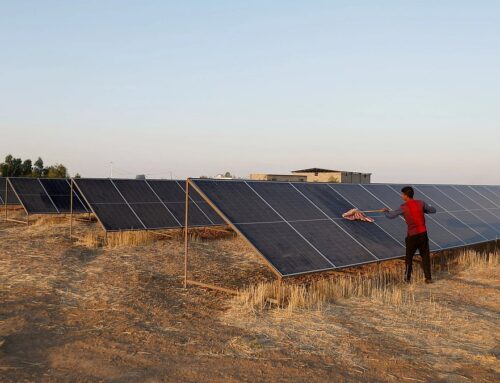Africa turns to China-made panels as solar deployment accelerates
October 12, 2025
The nations of Africa have turned the China to deliver essential solar panels as the continent notes the accelerated deployment of the renewable energy resource. Africa has seen several nations leaning on the import of solar panels from China as they attempt to mitigate the challenges faced by a lack of investment in existing conventional energy generation infrastructure. Additionally, several African nations have experienced massive power cuts, like South Africa, Nigeria, and Zambia, which have accelerated the need to integrate the renewable energy sector into the nations’ grids.
African imports of Chinese-made solar panels have seen an unprecedented increase recently
In countries that suffer massive blackouts for extended periods, developing the solar sector represents a sustainable form of energy generation that is not dependent on the failing electrical grid.
Several African nations have seen huge blackouts that last for hours on end. South Africa even has a term for it, “Loadshedding”. As a result, the interest in solar panels made in China has grown significantly in the past year.
Africa’s solar imports from China jumped 60% over the past year as of June. Chinese-made solar panels imported from July 2024 to June 2025 could provide 15 gigawatts (GW) of electricity to the continent, which has been left in the dark regarding the adoption of the solar power sector that has encompassed the world.
The sharpest growth in solar panel imports from China, which produces 80% of the world’s solar panels, was in Algeria. The North African nation went from barely importing any solar panels to importing 1.2 GW during the past 12 months.
Industry insiders have praised the increase in solar panel imports as the world embraces the renewable energy sector
As the world has become acutely aware of the potential that the renewable energy sector presents, several industry insiders have praised the embrace of solar power that has been evident in Africa.
The director of Ember’s global insights programme, David Jones, noted that the importing numbers represent a pivotal moment in the region.
“The take-off of solar in Africa is a pivotal moment. Solar power has vast potential to transform the African continent”. – David Jones, director of Ember’s global insights programme
A report of the industry states that while the import numbers are promising, it does not represent the installed capacity of solar panels, as many nations struggle to develop initiatives that allow the construction of solar projects, either in the private sector or on a more small-scale level.
Muhammad Mustafa Amjad, programme director at Renewables First, noted that tracking these additions is what makes the difference between “a messy shift and an organised, accelerated one”.
“Bottom-up energy transitions fueled by cheap solar are no longer a choice – they’re our future. Africa’s transition will happen regardless, but with timely data it can be more equitable, planned and inclusive,” – Muhammad Mustafa Amjad, programme director at Renewables First
Other nations further away from Africa have also embraced the potential that the solar sector has stored away. India recently added 4.8 GW of new solar cell capacity, which could transform the nation’s energy sector.
China is leading the world in solar panel manufacturing, but Europe has plans to change that
China produces the vast majority of the world’s solar panels, 80% to be exact. The result of that dominance in the solar manufacturing sector is that China has become the benchmark for the progress being made in the solar sector. Despite that dominance, Europe has plans to shrink the gap that exists in the market by manufacturing its own solar panels. Once that happens, we can expect the dominance that the Chinese have over the solar market to decline. Until then, China remains the leader in the solar panel manufacturing sector.
Author Profile
Search
RECENT PRESS RELEASES
Related Post




